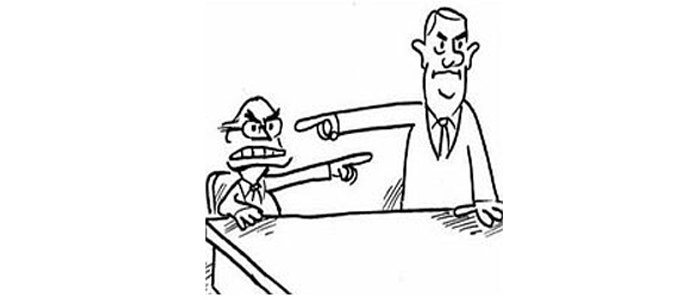Mostly, the important work in organisations does not involve an individual creating something from nothing. Frequently it involves individuals and groups working together. So why is it so very unusual to see individuals and groups working really harmoniously together? And why do some groups stop collaborating with other groups, preferring to spend most of their energies finger-pointing the other group? Same question with individuals?
Essentially it comes from the groups’ history and our interpretation of that history. In short, what we make that history mean.
For example, working recently with a number of departments which together form a complete manufacturing process, I asked the main protagonists what they thought ‘they’ (the other group) did not do well. I also asked them what they thought ‘we’ (their group) did not do well. When we compared the lists, we discovered that their lists did not overlap. That is, one group’s perception of the other’s negatives were based on actions that were not consistent with the other group’s perceptions of themselves – at all!
When I discussed these issues with both groups it became clear that it was not any one incident per se that caused the negative attitude to the other group but the conclusions, over time, that each group came to. And in all cases the conclusions they drew were not logical conclusions but ones based on a strong desire to make ‘their’ behaviour mean something. This conclusion then became enshrined in the folk lore of each group – and bingo, a group mindset was created; ‘they’re out to get us’, ‘they’re useless’, ‘you can’t trust them’, ‘(s)he doesn’t know what (s)he is talking about’. Is any of this true? Objectively, of course not, but within that group, it was a meaning that everyone signed up to!
So we make up conclusions about ‘them’ which forms a group mindset. And there comes a point – a tipping point – that creates the ‘truth’ about ‘them’. And if it’s negative more than positive then collaboration goes out of the window. ‘We’ will look for examples of ‘their’ behaviour that backs up our conclusion. And bang goes any chance that table-thumping meetings between the groups and their managers will have any effect on the groups’ mindsets. So once the culture is set, it is impossible for the groups themselves to disassociate themselves from their mindset.
- What is your experience of this process?
- Have you or your group been labelled ‘the bad guys’ while you’ve been labelling ‘them’ as the same?
- How frustrating is it when that mindset takes hold?
Feel inspired by this post? Then contact us at info@leaderslab.co.uk or post a comment below.
